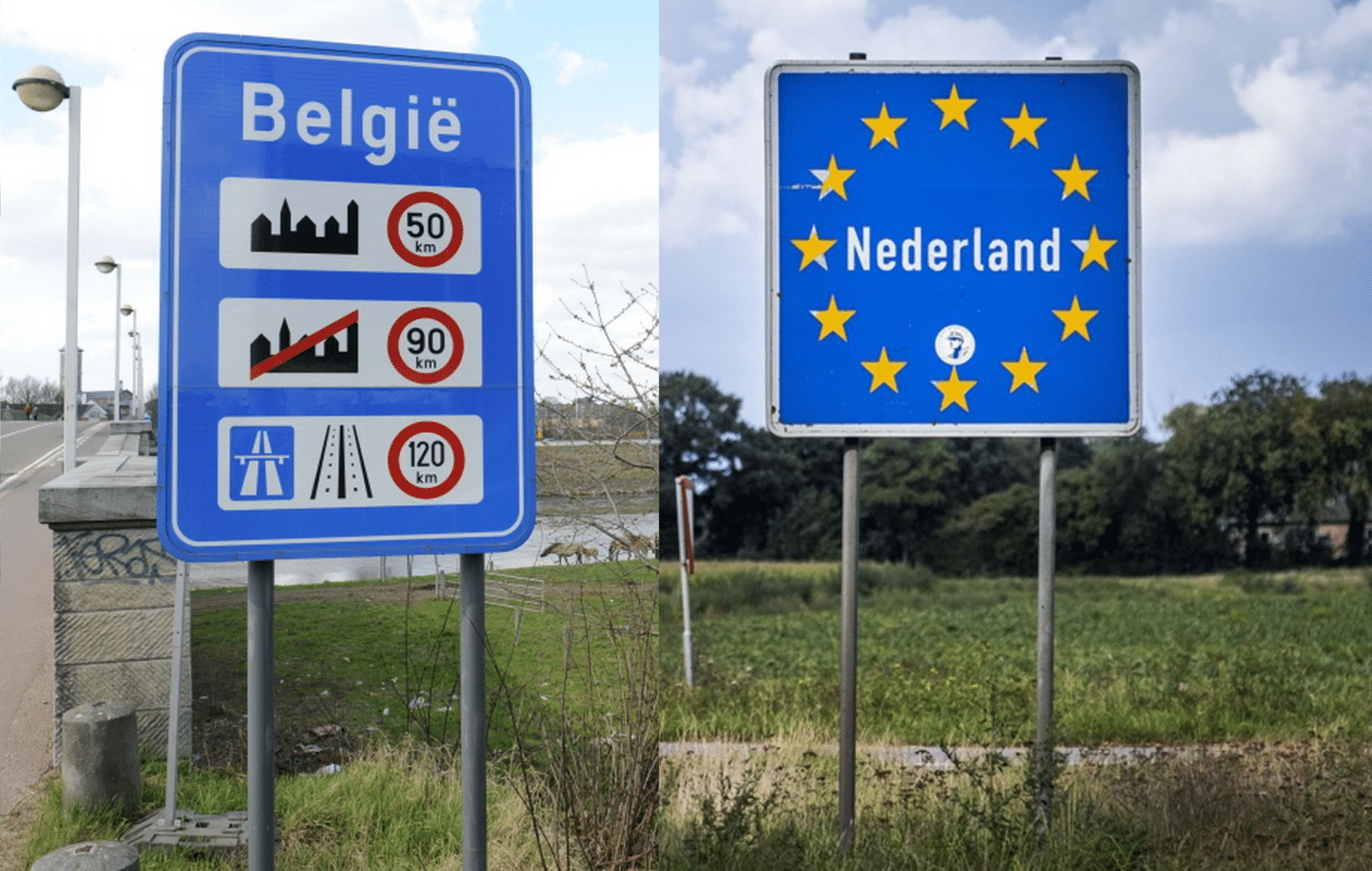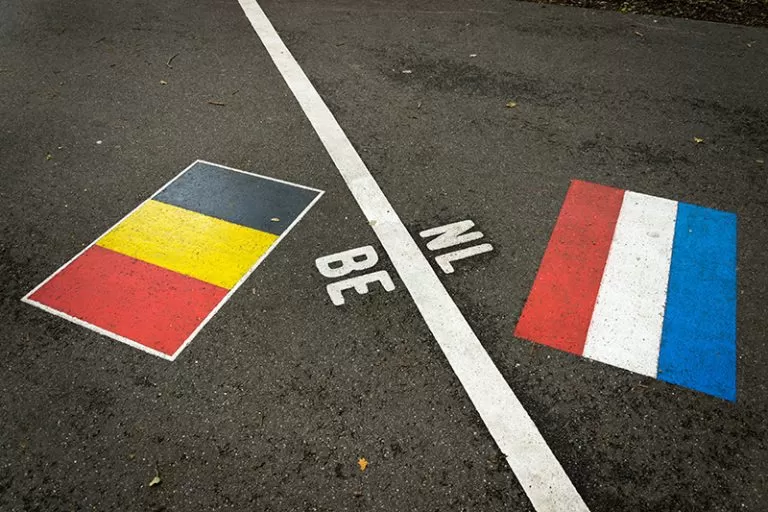The Promised Land on the Other Side of the Border
In both the Netherlands and Belgium, the number of inhabitants from the other country has grown considerably in the past fifteen years. But where in Flanders the Dutch form the largest group with a foreign nationality, in the Netherlands the Belgians only come in seventh place. Is abiding by the southern neighbours perhaps a nicer place to stay?
I crossed the border between the Netherlands and Belgium twice to live on the other side. When I was five years old, our family moved from Leffinge under the smoke of Ostend to Nijmegen in the east of the Netherlands. My father got a job there. Forty years later, I made the reverse move. This time it was my wife who found a job in Ghent. My own little history is typical of the migration movements between Belgium and the Netherlands: work is the main motive for crossing the border. In second place is education. Other motives are finding an attractive sweetheart or ditto house on the other side or, more prosaically, a place where tax rates are lower.
In 2007, the Central Bureau of Statistics mapped out these motives for living with the neighbours in collaboration with researchers from the Université Catholique de Louvain. At that time, three times as many Dutch people lived in Belgium than the other way around, 111,000 versus 36,000. On the map of the Low Countries which showed the concentration of Dutch/Belgian migrants, the border region was marked bright red. A high density of frontier workers resided near the more than four hundred- and fifty-kilometre-long border, i.e., people who lived in one country and worked in another. A relatively large number of Dutch people were also based in and around Brussels, close to the international institutions and all the organisations and companies that like prefer being close by. Conversely, quite a few Belgians lived in Oegstgeest and Leiden, which is probably due to the proximity of The Hague, where quite a few international institutions can be found.

At the time, the researchers stated that Belgium was a more attractive migration country for the Dutch than the Netherlands for the Belgians. They explained this, among other things, by the fact that the houses are usually cheaper, and Belgium has no wealth tax. That advantage had already partially disappeared since the Netherlands and Belgium concluded a tax treaty that stipulated Dutch people who live in Belgium but work in the Netherlands fall under the Dutch tax system. The researchers also noticed that quite a few Dutch people sought peace and space in the East Cantons. ‘The language and culture are closer to that of the Netherlands than to that of the French-speaking part of the Ardennes,’ they concluded.
The analysis of fifteen years ago has not been updated, there is no recent data on why Belgians and Dutch people seek refuge with their neighbours. But it does not seem implausible that the picture has remained roughly the same. The raw numbers that the statistical offices of the Low Countries keep track of, show in any case that there are still more than three times as many Dutch people living in Belgium than Belgians in the Netherlands. The latter group has grown to 51,251. This puts them in seventh place in the ranking of groups with a foreign nationality after the Turks, Moroccans, Surinamese, Indonesians, Germans, and Poles. Dividing the Belgians into Flemings, Walloons and Brussels residents is not easy. In the Dutch statistics, Belgians are Belgians and the distinction that is sometimes too important in the southern neighbours is of no importance here.
In Belgium, the Dutch are the second largest group with a foreign nationality after the French.
The number of Belgians in the Netherlands may have grown by more than forty percent over the past fifteen years, but the Dutch population in Belgium has increased in size at an equally rapid pace. There are now 163,474 Dutch nationals there says Statbel, the Belgian statistical office. Throughout the country, they form the second group with a foreign nationality after the French. The northern neighbours mainly live in the part of the country where they can speak their own language, Flanders. Numbering 145,092, they are by far the largest group there.
Why do more Dutch people move to Belgium than the other way around? In the absence of recent research into the motives for the migration of the Dutch/Belgians, their reasons for doing so are anyone’s guess. There is probably a grain of truth to the old cliché that Flemish people prefer to stay closer to home and the Dutch are more enterprising and keener on travelling. A more prosaic reason is that the average selling price of houses in the Netherlands is a lot higher than in Belgium, although nowadays it is cheaper in Zeeuws-Vlaanderen (Zealand Flanders) than on the Flemish side. Further east along the long border, people who work in the Netherlands and have found a cheaper home in Belgium can still benefit from the generous mortgage interest deduction in the Netherlands.
‘In general, the atmosphere in Belgium is quite friendly and most people enjoy the Burgundian lifestyle,’ the website vertreknaarbelgië.nl adds. These are of course horrific clichés, but this Dutch/Belgian can already confirm that Belgium is generally a pleasant place to be and that putting down roots on the other side of the border is an enriching experience.













